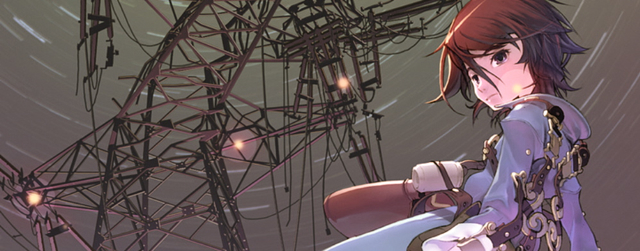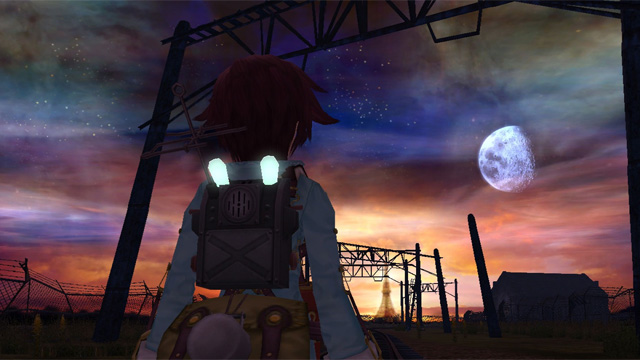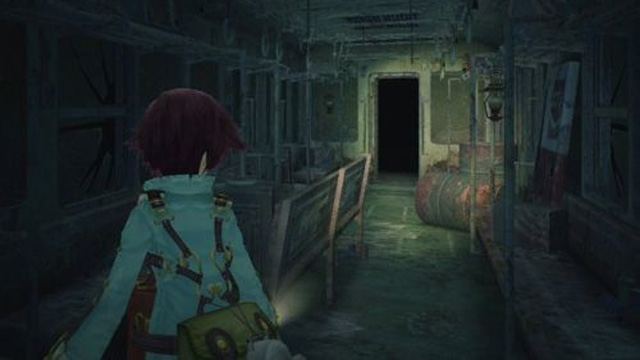
Fragile Dreams is the unfortunate victim of circumstance. Prior to its release, the game was one of the most anticipated RPGs coming to Wii, but its commercial reception was significantly hampered by the mixed reviews it received from gaming pundits. This is certainly a shame as there is no other title on the console quite like it, and it remains a compelling experience worth checking out in spite of the minor flaws that ultimately doomed it to the bargain bins.
Though billed as a Japanese RPG, Fragile Dreams in actuality bears little resemblance to the genre (save for the fact that protagonist Seto levels up on gaining sufficient battle experience). Combat, often a vital component of any role-playing game, is overly simplistic and occurs in real time, and you never recruit any additional party members during the course of your travels. Not only that, but where other RPGs weave grandiose tales of political intrigue and world strife, Fragile Dreams is decidedly more intimate in its scope, focusing instead on a 15-year-old boy’s search for other survivors in a post-apocalyptic world. Rather than rely on the conventions of its genre, as many other games are content to do, Fragile Dreams is forged in its own idiosyncratic mold and stands all the more intriguing because of it, a breath of fresh air in a category not particularly known for innovation.

The game’s greatest strength is its art direction. Despite any of its technical shortcomings, its myriad environments exude a haunting beauty that makes each of them a sight to behold. Every dilapidated area is convincingly created, with an impressive level of attention paid to the minutest details in the scenery. Faded movie posters in the crumbling subway, miscellaneous sundries in a mouldering hotel room– all of these little touches help make the world of Fragile Dreams feel like a place that was once genuinely inhabited, a melancholy reminder of all those who perished in the mysterious apocalypse that occurred prior to the game. Despite the straightforward layout of the various locales, their art direction makes each and every one of them an unforgettable place that beckons to be explored.
Story is also one of Fragile Dreams’s strong suits, and the game’s approach to narrative is certainly unique (especially in its medium). The title almost feels like a Japanese animated film in the way it unfolds, and chapters are even concluded with beautifully-drawn animated sequences. Given that there are very few supporting characters, Seto himself frequently narrates his feelings and your objectives but the most intriguing bits of story come from the various “memory items” you acquire during your journey. Each of these contains the remnants of a nameless person’s memories, giving you a fragmentary look into the lives of these people who knowingly lived on the brink of an apocalypse. The fact that many are presented without context is only appropriate given the sheer amount and variety of people living within any city, and most of these little backstories are wrought with sadness and genuine emotion. The game also utilizes its many environments to help tell its tale, and you can find scrawlings on the walls of various buildings that complement or foreshadow certain points of the plot. All of these methods combine to create a title that is unlike any other in its medium, and they help elevate Fragile Dreams above the conventions (and expectations) of its genre.
The game is also clever in its usage of the Wii Remote, particularly the controller’s built-in speaker. Aside from using the remote as a mock-flashlight (an intriguing concept that has gone far too underutilized), the title issues auditory cues through it depending upon your situation. The faint murmur of ghoulish enemies is heard through the controller’s speaker long before they materialize on the screen, and non-playable characters often talk to (or taunt) you through it as you explore certain areas. Companions also issue hints through the controller, which you can choose to hear at any time by simply lifting it to your ear. Few other titles utilize this feature of the Wii Remote the way Fragile Dreams does, and this usage synergizes perfectly with the atmosphere the title takes such great pains to create.

Despite all this praise, the game is certainly not without its faults, which any curious gamer should be aware of before purchasing the title. Given its heavy emphasis on story and atmosphere, the game takes its time unfolding, and without more robust gameplay options to compensate for this, many may not have the patience to endure its slow pacing. The controls themselves are serviceable (though they take quite a bit of getting used to), but because the game occurs from a third-person perspective, it occasionally flips out and changes Seto’s orientation when you point too low on the screen. This in itself is rarely a problem, but it can become bothersome, especially when you are trying to navigate through a narrow corridor. Inventory management is also quite cumbersome as your bag only has a limited carrying capacity, forcing you to frequently backtrack to one of the game’s save points to swap out your items. Perhaps worst of all (depending upon your perspective on the matter), the game is supremely linear, and each area is very straightforward in terms of its layout. This is slightly remedied as the game progresses, but it will not be enough to appease some gamers, and those who do not enjoy linear adventures will immediately be put off by this title.
That said, these niggling flaws do little to hamper the rest of the experience. Fragile Dreams remains one of the most unique adventures available on Wii, and that it has gone largely overlooked since its release is a shame. With apparently little left on the horizon for Nintendo’s wonder console, it would certainly be a good opportunity to give this neglected adventure the chance it deserves (especially as online retailers like Amazon are currently selling the game at a very affordable price). Not everyone, of course, will be taken in by its melancholic atmosphere or its rather simplistic gameplay, but it is a unique and unforgettable experience that should also prove to be a rewarding one to those curious enough to take the plunge.




 ShareThis
ShareThis







From the moment I first laid eyes on FD screen shots, I knew I had to try this one out. It really seems like Silent Hill-meets-Dark Cloud 2. One thing I think might have hurt sales was it seemed a little on the easy side (and slightly short, if it weren’t for the backtracking), maybe aimed at a younger audience in Japan.
Liked the article, but honestly I wish the game didn’t use the Wii remote speaker. The sound quality is absolutely horrible. But that’s Nintendo’s fault.
I agree about the sound quality, but I didn’t really mind it. I just thought it was neat that it was even used at all, and having to lift it to your ear for clues was clever. XD
I love the sense of isolation this game conveys. The way Seto tries to have human relationships with non-human characters was really well done. In addition I didn’t mind the mediocre controls because it made you feel more like a lost 15 year old boy in a world that was brutally indifferent to him.
It seems to have a strong adventure game-vibe too, a la Syberia and MYST. Nice to see developers taking some risks.
The fighting…
It’s not a button masher. Repeatedly pressing the attack button won’t work right. It’s based on timing. If you’ve played Phantasy Star Online, you’ll know what I mean, and learning the timing becomes much easier to get used to.
Another overlooked game: Sakura Wars: So Long, My Love.
I’m in the middle of playing this game right now. Superb atmosphere and great narrative that really sucks you in. It’s not for everyone — the pace is deliberate and the combat isn’t frenetic — but for those who like story this one is outstanding.
haha I also loved Sakura Wars. Though I couldn’t beat the last 2 stages of the 7 stage final boss. Definitely a unique Wii RPG worth checking out.
Does this mean I have to spend even more money this summer? :P
Yes. ;)